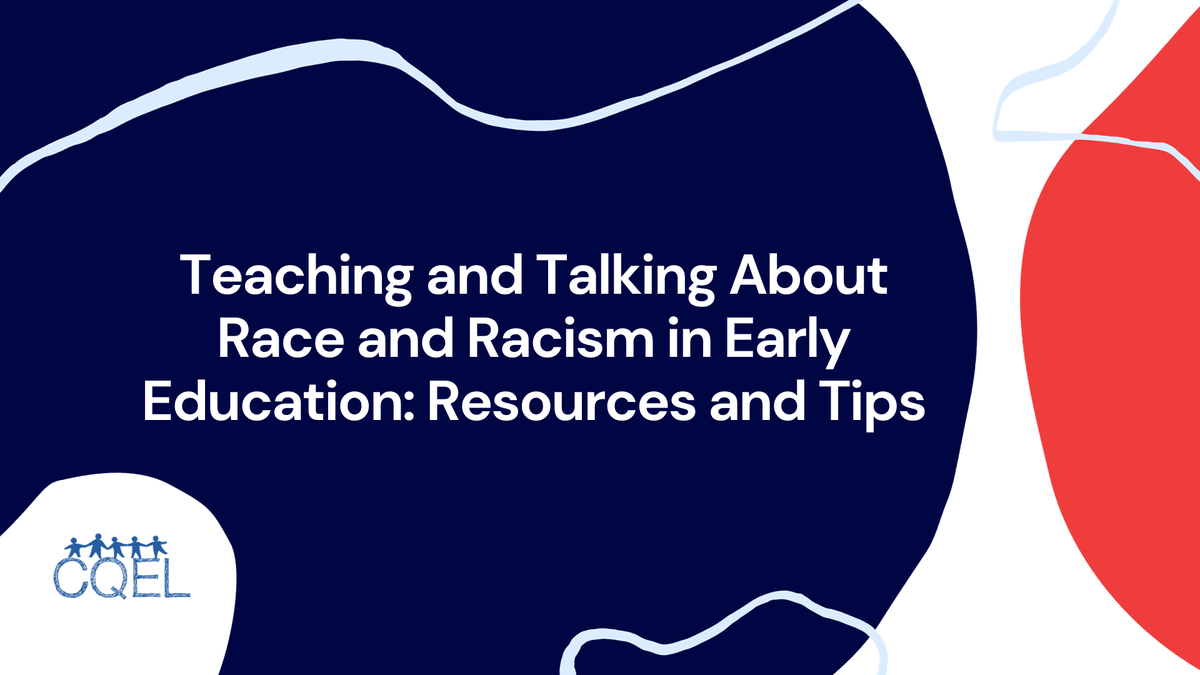Teaching and Talking About Race and Racism in Early Education: Resources and Tips
Learn essential tips & resources to talk about race & racism in early education. Start early, nurture empathy, address bias, & empower young minds to be champions of diversity & respect. Bloom a garden of acceptance - one conversation at a time!

Opening conversations about race and racism in early education can feel daunting, but it's also a crucial step toward nurturing understanding, empathy, and a sense of global citizenship in young minds. These early years are fertile ground for planting seeds of inclusion and awareness, and with the right tools and approach, we can cultivate a garden of respect and appreciation for all.
Here are some resources and tips to guide you on this journey:
Start Early, Plant Curiosity
- Embrace Curiosity: Children are naturally curious about the world around them, including differences in appearance and culture. Embrace their questions with open arms and honest answers tailored to their age and understanding.
- Celebrate Diversity: Use story time, classroom activities, and everyday interactions to showcase the beauty and richness of diverse cultures, ethnicities, and backgrounds. Highlight stories and illustrations that reflect your community and the wider world.
Nurturing Empathy, Uprooting Bias
- Center Children's Experiences: Encourage open dialogue and listen actively to their observations and questions. Validate their feelings and experiences while gently guiding them towards understanding others' perspectives.
- Challenge Stereotypes: Use age-appropriate language and activities to address and break down stereotypes. Highlight the individuality within each person, showcasing the spectrum of personalities, talents, and dreams within every identity.
Blooming into Action
- Connect to the Real World: Use relevant examples from current events and your community to show how race and racism play out in real life. Encourage critical thinking and discussions about promoting equity and combating discrimination.
- Model Inclusive Behavior: Children learn by observing the adults around them. Be a role model by demonstrating respect, acceptance, and appreciation for diversity in your own interactions and language.
Tools for Cultivating Understanding
- Seek Out Resources: Utilize resources from reputable organizations like the Anti-Defamation League, Teaching for Change, and the Southern Poverty Law Center. These organizations offer age-appropriate lesson plans, activities, and books to guide your conversations.
- Seek Ongoing Learning: Stay informed about new resources and research on teaching about race and racism. Participate in professional development opportunities to refine your approach and confidently address sensitive topics.
Remember, fostering awareness and understanding of race and racism is a journey, not a destination. There will be stumbles and questions along the way, but by creating a safe and inclusive space for open dialogue, we can empower children to become compassionate and critical thinkers who actively work towards a more just and equitable world.
Let's nurture these young minds with the seeds of inclusion, empathy, and respect, because a garden of acceptance starts with a single conversation.
Additional Resources:
- The National Museum of African American History and Culture: https://fellowships.si.edu/SORSNMAAHC
- Navigating the Early Years: An Early Childhood Learning Framework Book: https://www.gov.nl.ca/education/files/Early-Learning-Framework.pdf
- The Center for Racial Justice Innovation: https://re-center.org/en/resources/racial-justice-conference
Together, we can create a world where every child can blossom into their full potential, regardless of their race or background.
